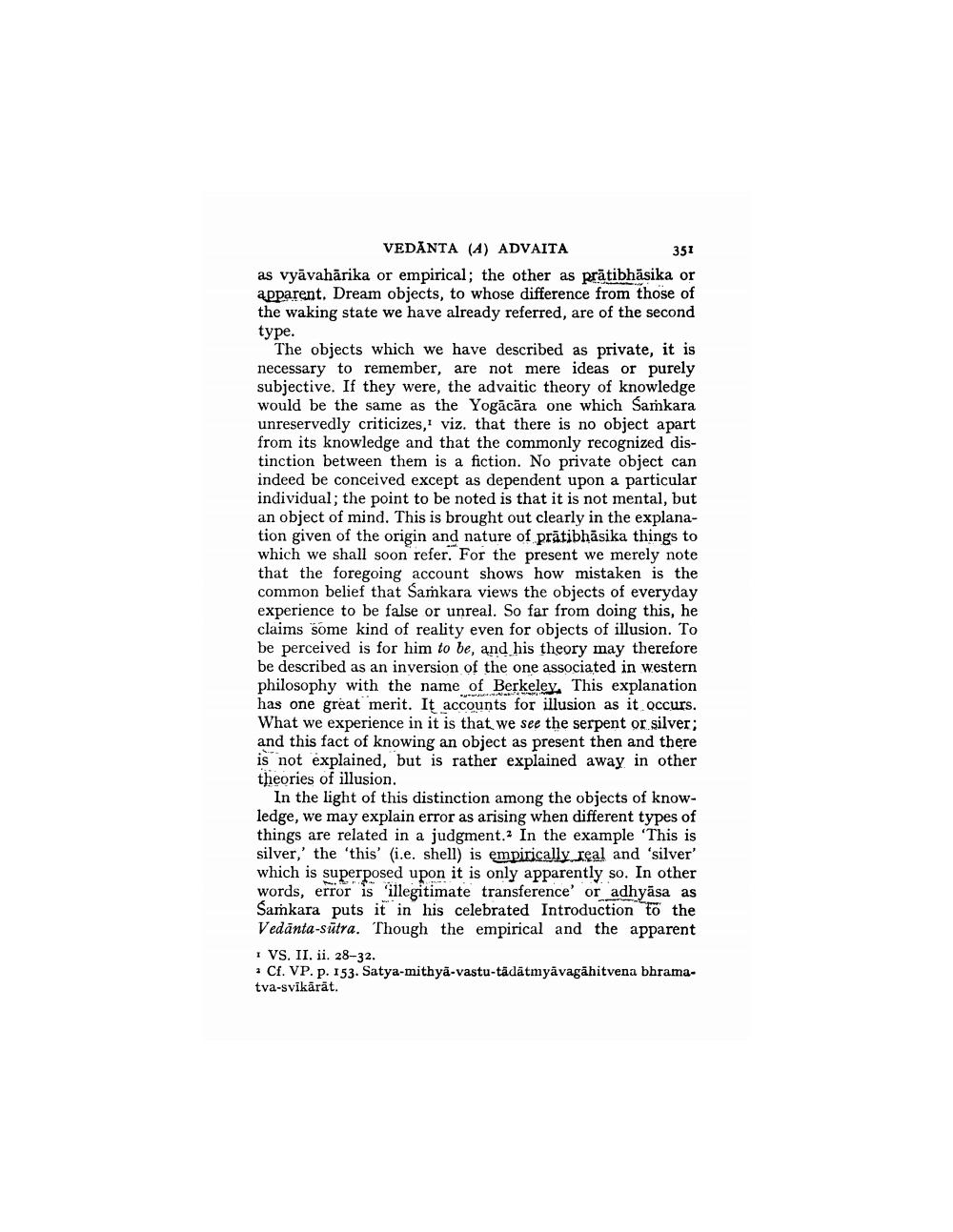________________
VEDANTA (A) ADVAITA
351 as vyāvahārika or empirical; the other as prātibhāsika or apparent. Dream objects, to whose difference from those of the waking state we have already referred, are of the second type.
The objects which we have described as private, it is necessary to remember, are not mere ideas or purely subjective. If they were, the advaitic theory of knowledge would be the same as the Yogācāra one which Šamkara unreservedly criticizes, viz. that there is no object apart from its knowledge and that the commonly recognized distinction between them is a fiction. No private object can indeed be conceived except as dependent upon a particular individual, the point to be noted is that it is not mental, but an object of mind. This is brought out clearly in the explanation given of the origin and nature of prātibhāsika things to which we shall soon refer. For the present we merely note that the foregoing account shows how mistaken is the common belief that Samkara views the objects of everyday experience to be false or unreal. So far from doing this, he claims some kind of reality even for objects of illusion. To be perceived is for him to be, and his theory may therefore be described as an inversion of the one associated in western philosophy with the name of Berkeley. This explanation has one great merit. It accounts for illusion as it occurs. What we experience in it is that we see the serpent or silver; and this fact of knowing an object as present then and there is not explained, but is rather explained away in other theories of illusion.
In the light of this distinction among the objects of knowledge, we may explain error as arising when different types of things are related in a judgment. In the example 'This is silver,' the 'this' (i.e. shell) is empirically real and 'silver' which is superposed upon it is only apparently so. In other words, error is illegitimate transference' or adhyāsa as Samkara puts it in his celebrated Introduction to the Vedānta-sūtra. Though the empirical and the apparent 1 VS. II. ii. 28-32. • Cf. VP. P. 153. Satya-mithya-vastu-tādātmyavagähitvena bhramatva-svikārät.




